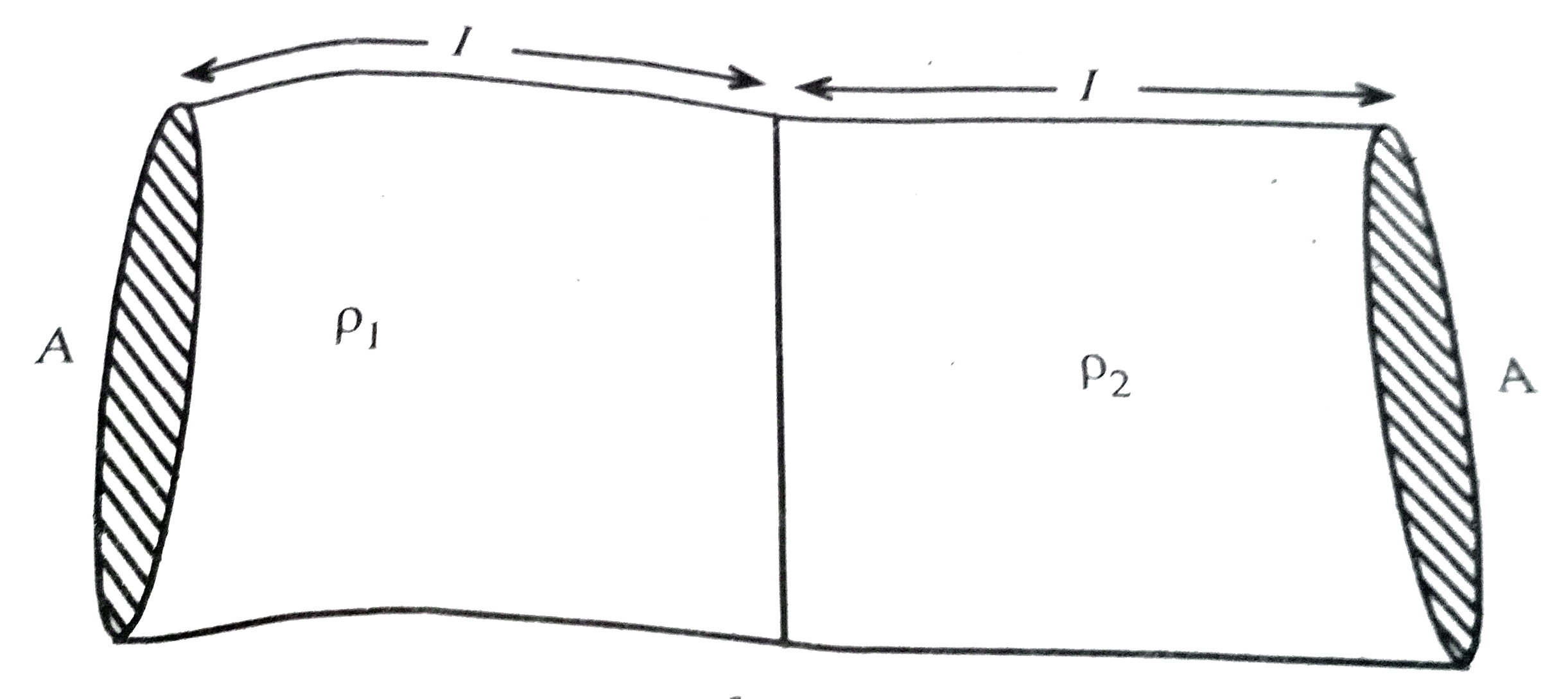Two cylindrical rods, of different material, are joined as shown. The rods have same cross section (A) and their electrical resistivities are ρ1andρ2. When a current I is passed through the rods, a charge (Q) gets piled up at the junction boundary. Assuming the current density to be uniform throughout the cross section, calculate Q.

The correct Answer is:Q=(ρ2−ρ1)∈0I
Q is negative if ρa>ρ2]
Step by step video, text & image solution for Two cylindrical rods, of different material, are joined as shown. The rods have same cross section (A) and their electrical resistivities are rho_(1) and rho_(2). When a current I is passed through the rods, a charge (Q) gets piled up at the junction boundary. Assuming the current density to be uniform throughout the cross section, calculate Q. by Physics experts to help you in doubts & scoring excellent marks in Class 12 exams.
Updated on:21/07/2023Topper's Solved these Questions
Similar Questions
Two wires of different materials have resistances in the ratio 4:3, lengths in the ratio 2:1 but have same radii of cross-section. Compare their resistivities.
View SolutionTwo cylindrical conductors with equal cross-sections and different resistivites ρ1 and ρ2 are point end to end. Find the charge at the boundary of the conduction if a current I flows from conductor 1 to conductor 2
View Solution
Knowledge Check
The specific resistance and area of cross section of the potentiometer wire are ρ' and A respectively. If a current i passes through the wire, its potential gradient will be
AiρABiρACiAρDiAρThe ratio of thermal conductivity of two rods of different material is 5:4. The two rods of same area of cross-section and same thermal resistance will have the lengths in the ratio
A4:5B9:1C1:9D5:4Two rods of copper and iron with the same cross sectional area are joined at S and a steady current i flows through the rods as shown in the figure

Choose the most appropriate representation of charges accumulated near the junction S.A B
B C
C D
D

Two rods having equal lengths and equal cross-sections but different specific resistances ρ1 and ρ2 are joined at one end as shown in the figure given above. What is the effective specific resistance of the combination ?
View SolutionFigure-4.50 shows a thermal network of two metal rods of same cross section area. If the heat current from the ends A and B is 130 W, find the heat current through the curved metal rod.

View SolutionA current i passes through a wire of length l , radius of cross-section r and resistivity ρ . The rate of heat generation is
View SolutionAs is the cross sectional area and ρ is the specific resistance of a potentiometer wire. If I is the current passing through the potentiometer wire, then the potential gradient along the length of the wire is given by
View SolutionStatement 1: A direct current flows through a metallic rod. It produces magnetic field only outside the rod.
Statement 2: The charge carries flow through whole of the cross section.
View Solution